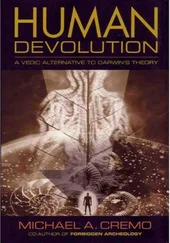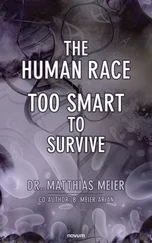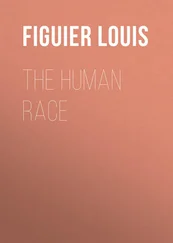Michael Cremo - Forbidden Archeology - The Hidden History of the Human Race
Здесь есть возможность читать онлайн «Michael Cremo - Forbidden Archeology - The Hidden History of the Human Race» весь текст электронной книги совершенно бесплатно (целиком полную версию без сокращений). В некоторых случаях можно слушать аудио, скачать через торрент в формате fb2 и присутствует краткое содержание. Год выпуска: 1992, ISBN: 1992, Издательство: Torchlight Publishing, Жанр: Старинная литература, на английском языке. Описание произведения, (предисловие) а так же отзывы посетителей доступны на портале библиотеки ЛибКат.
- Название:Forbidden Archeology: The Hidden History of the Human Race
- Автор:
- Издательство:Torchlight Publishing
- Жанр:
- Год:1992
- ISBN:9780892132942
- Рейтинг книги:4 / 5. Голосов: 1
-
Избранное:Добавить в избранное
- Отзывы:
-
Ваша оценка:
- 80
- 1
- 2
- 3
- 4
- 5
Forbidden Archeology: The Hidden History of the Human Race: краткое содержание, описание и аннотация
Предлагаем к чтению аннотацию, описание, краткое содержание или предисловие (зависит от того, что написал сам автор книги «Forbidden Archeology: The Hidden History of the Human Race»). Если вы не нашли необходимую информацию о книге — напишите в комментариях, мы постараемся отыскать её.
Forbidden Archeology: The Hidden History of the Human Race — читать онлайн бесплатно полную книгу (весь текст) целиком
Ниже представлен текст книги, разбитый по страницам. Система сохранения места последней прочитанной страницы, позволяет с удобством читать онлайн бесплатно книгу «Forbidden Archeology: The Hidden History of the Human Race», без необходимости каждый раз заново искать на чём Вы остановились. Поставьте закладку, и сможете в любой момент перейти на страницу, на которой закончили чтение.
Интервал:
Закладка:
Haeckel published his view of human evolution in 1866, in General Morphology of Organisms , and in 1868, in Natural History of Creation. These books appeared several years before Darwin came out with Descent of Man, in which Darwin acknowledged Haeckel’s work. Haeckel believed humans had arisen from a primate ancestor in south Asia or Africa: “considering the extraordinary resemblance between the lowest woolly-haired men, and the highest man-like apes . . . it requires but a slight imagination to conceive an intermediate form connecting the two” (Spencer 1984, p. 9).
1.4 The search Begins
In his book The Antiquity of Man, first published in 1863, Charles Lyell, like Huxley and Haeckel, expressed the belief that fossils of a creature intermediate between the apes and humans would someday be found. The most likely places were “the countries of the anthropomorphous apes . . . the tropical regions of Africa and the islands of Borneo and Sumatra” (Lyell 1863, p. 498).
Of course, it should be kept in mind that the missing link was not expected to connect modern humans with modern monkeys, but instead with the fossil apes. The first human ancestor, it was thought, must have branched off from the old World monkeys sometime before the Miocene period. As Darwin himself stated (1871, p. 520): “We are far from knowing how long ago it was when man first diverged from the Catarrhine [Old World monkey] stock; but it may have occurred at an epoch as remote as the Eocene period; for that higher apes had diverged from the lower apes as early as the upper Miocene period is shown by the existence of Dryopithecus .”
Dryopithecus is still recognized as an early precursor of the anthropoid or humanlike apes, which include gorillas, chimpanzees, gibbons, and orangutans. As previously noted, Dryopithecus was discovered by Alfred Fontan, near Sansan in the Pyrenees region of southern France. In 1856, the find was reported to the scientific world by Edouard Lartet, who also gave it its name, which means “forest ape.” in 1868, Louis Lartet, the son of Edouard Lartet, reported on fossils of the earliest fully modern humans, discovered near Cro-Magnon in southwestern France. Recently, Cro-Magnon man has been assigned a date of 30,000–40,000 years. At the time, no fossils intermediate between Dryopithecus and Cro-Magnon man, except the Neanderthal man bones from Germany and Gibraltar, had been found (or so it appears from today’s accounts).
In general, Lyell wanted to see the presence of anatomically modern humans pushed far back in time—but not too far. There were limits: “we cannot expect to meet with human bones in the Miocene formations, where all the species and nearly all the genera of mammalia belong to types widely differing from those now living; and had some other rational being, representing man, then flourished, some signs of his existence could hardly have escaped unnoticed, in the shape of implements of stone or metal” (Lyell 1863, p. 399).
This idea links the origin of humans directly with the succession in time of mammalian species, and it would be seen today as implicitly evolutionary. However, Lyell (1863, p. 499) proposed withholding final judgement regarding human evolution until a great many fossils confirming modern humanity’s link with Dryopithecus were discovered: “At some future day, when many hundred species of extinct quadrumana [primates] may have been brought to light, the naturalist may speculate with advantage on this subject.”
Still, Lyell clearly felt we should not let the lack of such evidence prejudice us against the idea of evolution. “The opponents of the theory of transmutation sometimes argue,” he wrote, “that, if there had been a passage by variation from the lower Primates to Man, the geologist ought ere to this have detected some fossil remains of the intermediate links of the chain” (Lyell 1863, p. 435). But Lyell went on to suggest that “what we have said respecting the absence of gradational forms between the recent and Pliocene mammalia . . . may serve to show the weakness in the present state of science of any argument based on such negative evidence, especially in the case of man, since we have not yet searched those pages of the great book of nature, in which alone we have any right to expect to find records of the missing links alluded to” (1863, pp. 435–436). He believed the proper paleontological pages were to be found in Africa and the East Indies. It is there, he felt that “the discovery, in a fossil state, of extinct forms allied to the human, could be looked for” (Lyell 1863, p. 498).
Lyell’s approach was reasonable, since he advocated withholding judgement until enough evidence was gathered. However, while rejecting arguments based on a lack of evidence, he was perhaps implicitly assuming that the discovery of semihuman forms would confirm modern humanity’s descent from those forms. This is an error (and a perennial one), for the presence of a semihuman form does not preclude the contemporary or prior existence of fully human forms.
1.5 Darwin speaks
We have now seen that Huxley, Haeckel, and Lyell all wrote major works dealing with the question of human origins and that they did so before Darwin, who had deliberately held back from treating the question in The Origin of Species . Finally, in 1871 Darwin came out with his own book, Descent of Man. explaining his delay, Darwin (1871, p. 389) wrote: “during many years I collected notes on the origin or descent of man, without any intention of publishing on the subject, but rather with the determination not to publish, as I thought that I should thus only add to the prejudices against my views. It seemed to me sufficient to indicate, in the first edition of my ‘Origin of Species,’ that by this work ‘light would be thrown on the origin of man and his history;’ and this implies that man must be included with other organic beings in any general conclusion respecting his manner of appearance on this earth.”
In Descent of Man , Darwin was remarkably explicit in denying any special status for the human species. “We thus learn that man is descended from a hairy, tailed quadruped, probably arboreal in its habits, and an inhabitant of the Old World. . . . The higher mammals are probably derived from an ancient marsupial animal, and this through a long series of diversified forms, from some amphibianlike creature, and this again from some fish-like animal. In the dim obscurity of the past we can see that the early progenitor of all the vertebrata must have been an aquatic animal. . . . More like the larvae of the existing marine Ascidians than any other known form” (Darwin 1871, p. 911). It was a bold statement, yet one lacking the most convincing kind of proof—fossils of species transitional between the ancient dryopithecine apes and modern humans.
The absence of evidence of possible transitional forms may not provide a proper disproof of evolution, but one can argue that such forms are required in order to positively prove the theory. Yet aside from the Neanderthal skulls and a few other little-reported finds of modern morphology, there were no discoveries of hominid fossil remains. This fact soon became ammunition to those who were revolted by Darwin’s suggestion that humans had apelike ancestors. Where, they asked, were the fossils to prove it?
1.6 The Incompleteness of the Fossil Record
Darwin himself (1871, p. 521) felt forced to reply and sought to defend himself by appealing to the imperfection of the fossil record: “With respect to the absence of fossil remains, serving to connect man with his ape-like progenitors, no one will lay much stress on this fact who reads sir c. Lyell’s discussion ( Elements of Geology 1865, pp. 583–585 and Antiquity of Man 1863, p. 145), where he shows that in all the vertebrate classes the discovery of fossil remains has been a very slow and fortuitous process. nor should it be forgotten that those regions which are the most likely to afford remains connecting man with some extinct ape-like creatures, have as yet not been searched by geologists.”
Читать дальшеИнтервал:
Закладка:
Похожие книги на «Forbidden Archeology: The Hidden History of the Human Race»
Представляем Вашему вниманию похожие книги на «Forbidden Archeology: The Hidden History of the Human Race» списком для выбора. Мы отобрали схожую по названию и смыслу литературу в надежде предоставить читателям больше вариантов отыскать новые, интересные, ещё непрочитанные произведения.
Обсуждение, отзывы о книге «Forbidden Archeology: The Hidden History of the Human Race» и просто собственные мнения читателей. Оставьте ваши комментарии, напишите, что Вы думаете о произведении, его смысле или главных героях. Укажите что конкретно понравилось, а что нет, и почему Вы так считаете.












